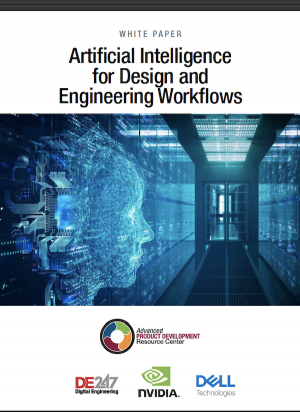New NVIDIA RTX GPUs Built for AI-Powered Design and Visualization
Based on the NVIDIA Ampere architecture, the new RTX A400 and RTX A1000 GPUs deliver real-time ray tracing and support for generative AI tools to every workstation.

The NVIDIA RTX A1000 GPU. Image courtesy of NVIDIA.
Latest News
May 21, 2024
NVIDIA is expanding its RTX professional graphics line with two new NVIDIA Ampere architecture-based GPUs for desktops: the NVIDIA RTX™ A400 and NVIDIA RTX A1000. The new GPUs expand access to artificial intelligence (AI) and ray-tracing technology.
The RTX A400 GPU introduces accelerated ray tracing and AI to the RTX 400 series GPUs. With 24 Tensor Cores for AI processing, it enables professionals to run AI applications, such as intelligent chatbots and copilots, directly on their desktops.
The GPU delivers real-time ray tracing so creators can build physically accurate 3D renders that push the boundaries of creativity and realism. The A400 also includes four display outputs, a first for its series.
The NVIDIA RTX A1000 GPU brings Tensor Cores and RT Cores to the RTX 1000 series GPUs. With 72 Tensor Cores, the A1000 provides accelerated generative AI processing for tools like Stable Diffusion. In addition, its 18 RT Cores speed rendering tasks, accelerating professional workflows such as product and architectural design and visualization .
The A1000 also excels in video processing, handling up to 38% more encode streams and offering faster decode performance over the previous generation. With a single-slot design and consuming just 50W, the A400 and A1000 GPUs deliver these features to compact, energy-efficient workstations.
Advanced AI Support
In a recent NVIDIA blog, Stacy Ozorio, senior product marketing manager for enterprise platforms at NVIDIA, wrote: “These new GPUs empower users with cutting-edge AI, graphics and compute capabilities to boost productivity and unlock creative possibilities. Advanced workflows involving ray-traced renders and AI are now within reach, allowing professionals to push the boundaries of their work and achieve stunning levels of realism.”
According to NVIDIA, with the new GPUs engineers can see improvements in 3D CAD workflows, and teams working in smart spaces can use the GPUs for real-time data processing, AI-enhanced security and digital signage deployments in space-constrained settings.

The NVIDIA RTX A400 and A1000 GPUs are equipped with features designed to optimize workflows, including:
- Second-generation RT Cores: Real-time ray tracing, photorealistic, physically based rendering and visualization for all professional workflows, including 3D design and content creation.
- Third-generation Tensor Cores: Accelerates AI-augmented tools and applications such as generative AI, image rendering denoising and deep learning super sampling (DLSS).
- Ampere architecture-based CUDA cores: Speedups in graphics and compute workloads.
- 4GB or 8GB of GPU memory: 4GB of GPU memory with the A400 GPU and 8GB with the A1000 GPU accommodate a range of professional needs, from basic graphic design and photo editing to more demanding 3D modeling with textures or high-resolution editing and data analyses.
- Encode and decode engines: With seventh-generation encode (NVENC) and fifth-generation decode (NVDEC) engines, the GPUs offer efficient video processing to support high-resolution video editing, streaming and playback with ultra-low latency.


Performance may vary by system, application workflow, or scene. NVIDIA RTX A400 and A1000 tests run on Intel® Core i9-12900K@3.20GHz 5.20GHz Turbo, 64GB system memory. NVIDIA driver 551.79. CAD – SPECviewperf 2020 SOLIDWORKS 1080p subset composite scores.
You can learn more about the new NVIDIA RTX GPUs here.
More Dell Coverage

More NVIDIA Coverage
Subscribe to our FREE magazine, FREE email newsletters or both!
Latest News








